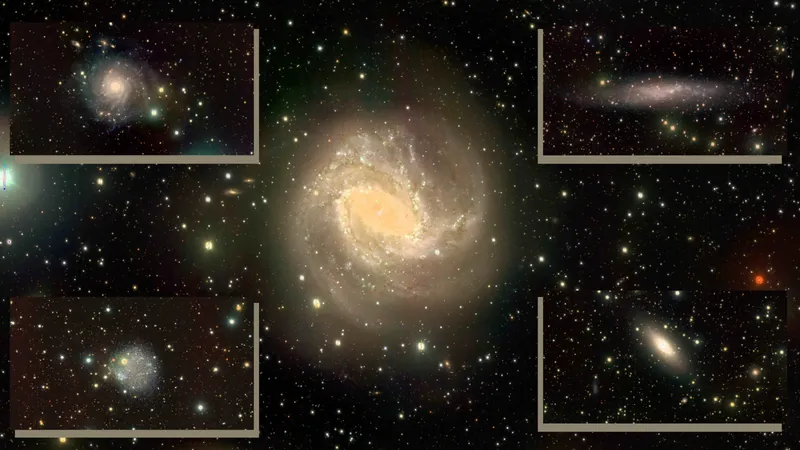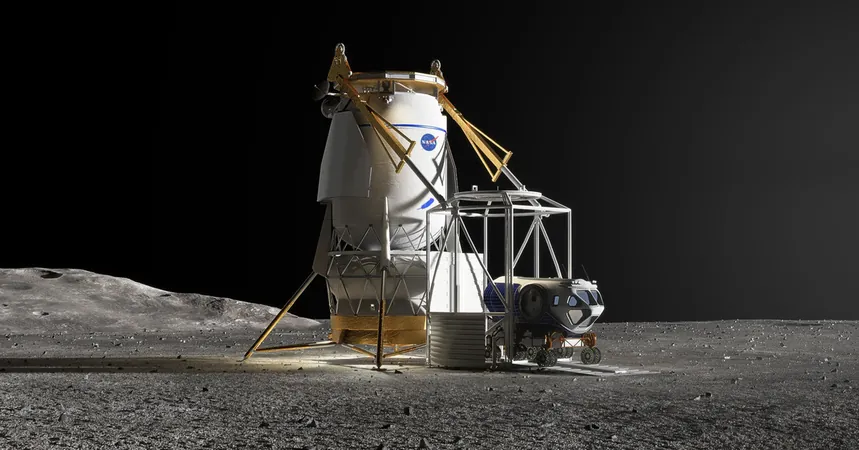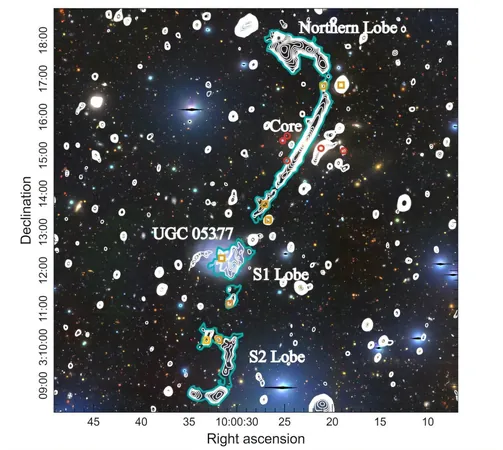
Discover 5 Breathtaking Galaxy Images that Unveil the Secrets of Cosmic Evolution!
2024-11-19
Author: Sarah
Astronomers using the powerful Very Large Telescope (VLT) in the Atacama Desert of Northern Chile have unveiled five breathtaking images of galaxies, each telling a unique story of cosmic evolution and stellar formation. This incredible project not only showcases the intricate details of galaxy shapes and structures but also deepens our understanding of the local universe we inhabit.
The five galaxies illustrated in these stunning portraits, released on November 15, are part of an extensive survey named the VST Survey of Mass Assembly and Structural Hierarchy (VST-SMASH). This initiative aims to investigate a total of 27 galaxies, some of which dwell on the fringes of our local group that includes the Milky Way, while others are situated much further away.
Among the highlights is the spiral galaxy IC 5332, located about 30 million light-years away in the Sculptor constellation. Its stunning spiral arms are not only a visual treat but also provide astronomers with invaluable data about star formation processes.
The research team selected these galaxies because they occupy the same part of the sky that is being studied by the upcoming Euclid space telescope. Together, these observations will provide a comprehensive view of these celestial bodies, combining red wavelength images from the VLT's visible instrument and near-infrared images from the Near Infrared Spectrometer and Photometer (NISP).
One of the most renowned galaxies in this collection is the "Southern Pinwheel" – NGC 5236, also known as M83, which lies approximately 15 million light-years from Earth. This galaxy is a prime example of how galaxies can form and evolve over millions of years.
Crescenzo Tortora, the project leader for VST-SMASH, emphasized the importance of this research: “We strive to understand how galaxies are formed based on their mass and morphology. This involves investigating how stars form within galaxies and how they are acquired through interactions and mergers with neighboring galaxies.” By tracing the subtle colors and structures in these galaxies, astronomers can illuminate the remnants of galactic collisions and the hierarchical processes that constitute cosmic structure formation.
Among the local group galaxies captured is the irregular dwarf galaxy Sextans A, located a mere 4 million light-years away in the Sextans constellation. Its unique characteristics provide insights into the variety of galactic types present in our local universe. Another galaxy, NGC 3109, also 4 million light-years away, adds to the impressive catalog of local group members under investigation.
As early analyses of the VST data continue, these extraordinary images already demonstrate the project's effectiveness in studying galaxies with low surface brightness. The VLT's extensive field of view—roughly four times the size of the full moon—has made it an ideal instrument for capturing such detailed astronomical observations in a short time frame.
“This is the first time that these galaxies have been observed in such depth and detail with consistent data,” Tortora remarked. In the coming years, the insights garnered from this project will be further enhanced by the Euclid space telescope, which is set to capture comparable depths of images.
Additionally, the Vera Rubin Observatory, currently under construction in Chile, will join the fray, utilizing similar wave lengths as the VST but with the ambition of conducting the decade-long Legacy Survey of Space and Time (LSST), which aims to reach similar observational depths.
Overall, the VST-SMASH project promises to deliver groundbreaking findings and shed light on the mysteries of cosmic evolution—keeping astronomers excited for what the universe has yet to reveal!
Stay tuned, as we dive deeper into the cosmos and uncover the secrets that lurk beyond our galaxy!



 Brasil (PT)
Brasil (PT)
 Canada (EN)
Canada (EN)
 Chile (ES)
Chile (ES)
 España (ES)
España (ES)
 France (FR)
France (FR)
 Hong Kong (EN)
Hong Kong (EN)
 Italia (IT)
Italia (IT)
 日本 (JA)
日本 (JA)
 Magyarország (HU)
Magyarország (HU)
 Norge (NO)
Norge (NO)
 Polska (PL)
Polska (PL)
 Schweiz (DE)
Schweiz (DE)
 Singapore (EN)
Singapore (EN)
 Sverige (SV)
Sverige (SV)
 Suomi (FI)
Suomi (FI)
 Türkiye (TR)
Türkiye (TR)